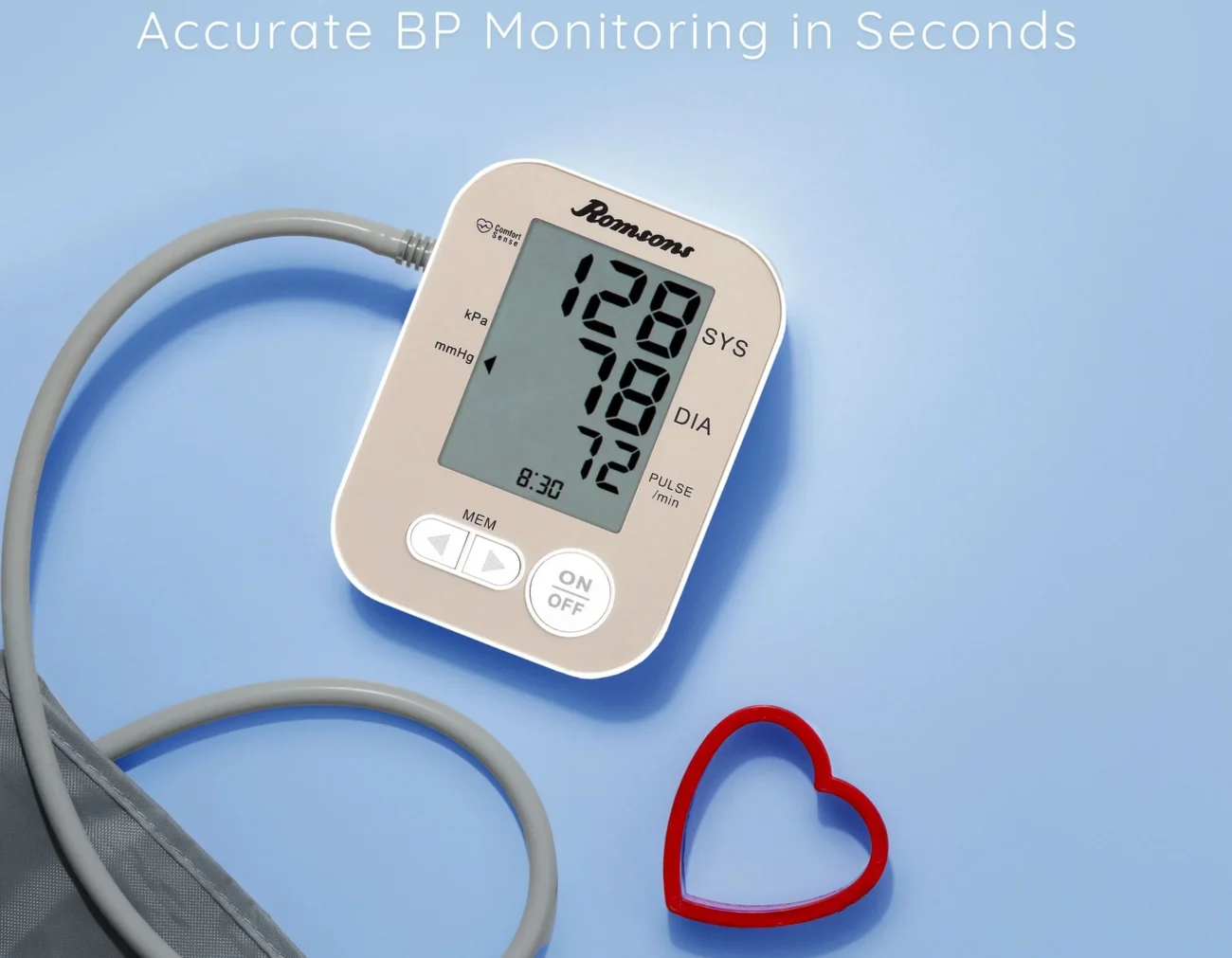TL;DR
- A blood pressure machine helps measure the pressure that one’s blood exerts on the arteries while the heart pumps out blood.
- With easy-to-use technology and accurate readings, these devices support regular health monitoring at home. They are the primary way to detect hypertension (high blood pressure), which may not have other obvious symptoms.
- It is important to know how to use and store a blood pressure machine to care for one’s own health properly and that of loved ones.
In today’s fast-paced world, keeping track of one’s health has never been more important. A blood pressure machine is one of the main devices for looking after cardiovascular well-being.
It allows one to monitor blood pressure accurately from the comfort of their home, reducing dependency on local clinics and healthcare professionals. Modern machines are digital and user-friendly, making it easier for people of all ages to use them.
How Does a Blood Pressure Machine Work?
A blood pressure machine measures the force exerted by circulating blood on the walls of the arteries. Most modern machines provide quick and easy-to-read results.
The machine’s main components include:
- Cuff: It is wrapped around the upper arm and inflated temporarily to stop blood flow. The machine measures blood pressure as the cuff deflates.
- Pressure Sensor: This sensor detects the force of the blood flow and converts it into readable numbers for systolic and diastolic pressure.
- Display Screen: The screen shows the reading clearly, often including pulse rate and other health indicators.
Benefits of Using a Blood Pressure Machine
Using a blood pressure machine for regular health checkups gives multiple advantages, making it a useful tool for preventive care:
- Early detection of hypertension: Regular monitoring helps identify high blood pressure before it leads to serious complications such as heart disease or a stroke.
- Convenience at home: Digital blood pressure machines allow users to check their readings anytime, reducing the need for frequent clinic visits. A lot of machines also have a memory recall button that shows old readings.
- Accurate and reliable readings: Modern devices offer precise measurements with minimal errors.
- Supports lifestyle management: By tracking changes over time, users can see the effects of lifestyle changes such as diet and exercise in real time.
- Enhanced patient management: Having a personal monitoring device empowers individuals to take charge of their health and reduces anxiety related to sudden spikes or drops in blood pressure.
Final Recommendations
A blood pressure machine is necessary and convenient. It helps users track developments in their health over a period of time and see which regimen works best for them.
For comprehensive health monitoring, pairing the machine with a digital thermometer allows one to quickly and accurately check both blood pressure and body temperature at home.

With consistent use, proper handling, and simple maintenance, a blood pressure machine not only aids a better health routine but also provides peace of mind and reduces medical expenses. This makes it a practical addition to every household’s health toolkit.
Frequently Asked Questions (FAQs)
- How often should blood pressure be monitored at home for accurate results?
For reliable readings, it is recommended to check at the same times each day, ideally in the morning and evening. Keeping a log over several weeks provides a clearer picture of blood pressure patterns and helps healthcare professionals to give informed advice.
- Can a blood pressure machine detect early signs of other health conditions?
While primarily used for measuring blood pressure, consistent readings can indicate potential cardiovascular issues or kidney problems. Unexplained spikes or drops in blood pressure may prompt further investigation by a doctor.
- How can using a digital thermometer alongside a blood pressure machine improve home health monitoring?
Combining a blood pressure machine with a digital thermometer allows users to track multiple vital signs at once. Regularly monitoring both blood pressure and body temperature can help detect early signs of infection, fever-related stress, or other health anomalies, supporting more comprehensive at-home care.
